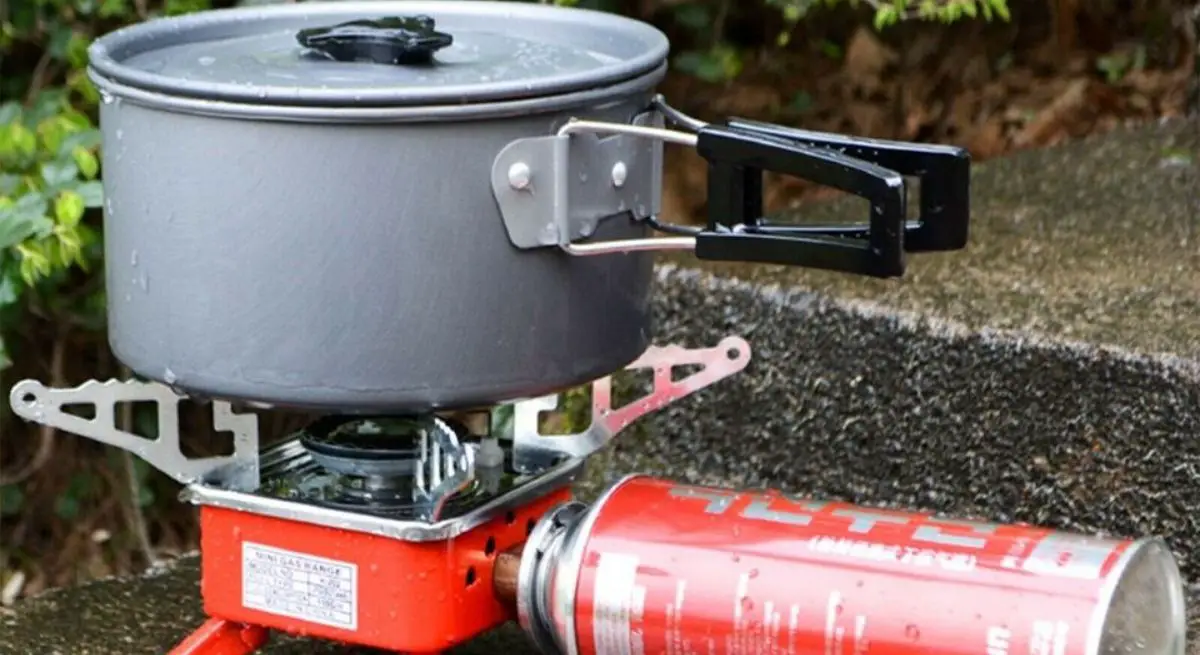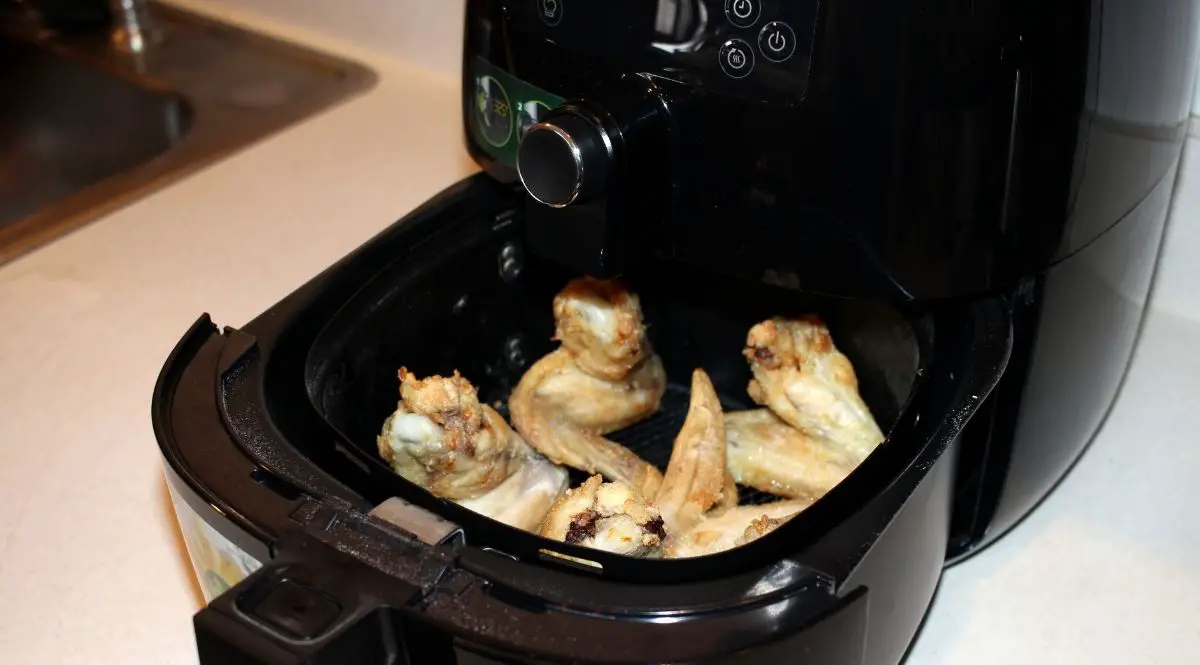| Fuel | Type | Flame Temp | Pros | Cons |
|---|---|---|---|---|
| Propane | Liquid/Canister | 1980 ˚ C/3596 ˚ F | · Most RVs are set up for it. · Easy to find in North America · Cheap · Easy to use | · Requires specialized storage, plumbing, and regulation. · Leaks can be extremely dangerous. |
| Butane | Liquid/Canister | 1970 ˚ C/3578 ˚ F | · Efficient · Clean burning | · Canisters can be wasteful · Bulky canisters take up a lot of space |
| Butane Mixes | Liquid/Canister | 1970 ˚ C/3578 ˚ F | · Efficient · Clean Burning · Better cold-weather performance than straight butane | · Canisters can be wasteful · Bulky canisters take up a lot of space |
| Kerosene Paraffin | Liquid | 990 ˚ C/1814 ˚ F | · Broad global availability · Cheap | · Burns dirty |
| Alcohol | Liquid | 990 ˚ C/1000 ˚ F | · Inexpensive equipment · No special containers are required · Burns clean · Relatively safe | · Low flame temp · Expensive fuel |
| White Gas | Liquid | 1026 ˚ C/1878 ˚ F | · Clean burning · High heat · Excellent cold-weather performance | · Can be difficult to start · Prone to flareups |
| Gasoline | Liquid | 1026 ˚ C/1878 ˚ F | · Readily available · Cheap | · Smells bad · Burns dirty |
| Hexamine | Solid | 1026 ˚ C/1300 ˚ F | · Won’t spill · Doesn’t melt when burning · Easy to store · No special equipment is needed to use | · Hard to control heat · Low temperature · Can generate toxic byproducts |
| Wood | Solid | 482 ˚ C/900 ˚ F | · Easy to find · Adds flavor to cooking · Inexpensive | · Hard to control the temperature · Bulky/dirty to store |
| Electric | N/A | Variable | · Clean · Easy to control · No open flame | · Requires access to electricity · Slow to heat |
What Is The Right Kind Of Fuel For Your Camping Trip?
Choosing the right fuel for your camping trip can seem daunting, but the best choice can usually be found when considering just a few factors.
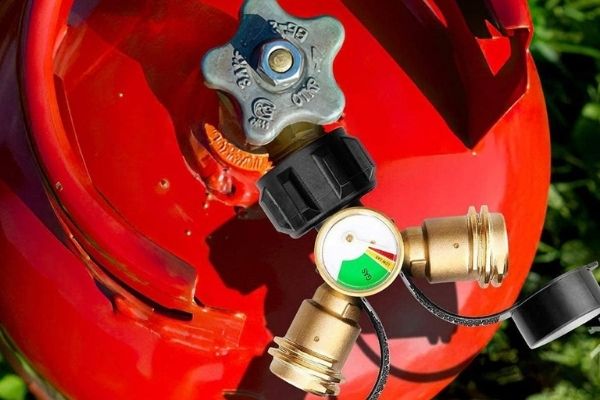
How Will You Be Camping?
If you camp in an RV then your best fuel choices will be determined by how your camper is equipped.
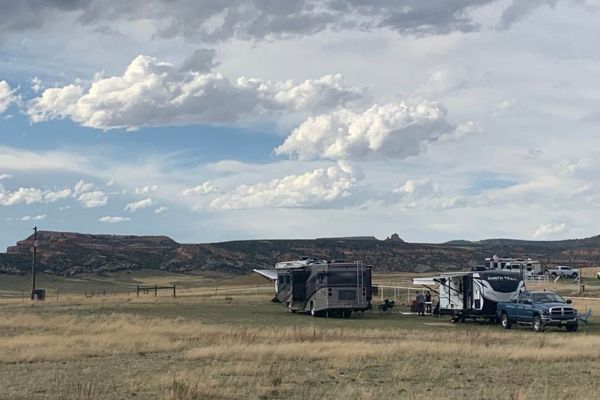
Propane is the most common RV fuel and it is usually stored in bulk within propane tanks mounted on the RV. These tanks typically range from 20 – 80 lb units which will provide enough fuel to cook meals using the RV’s cooking appliances for several days to several weeks. Propane is great for remote RV camping since it does not need any electrical power source to work.
The next most common are electric cooking appliances. These work great while in an improved campground with standard utility connections. They can also be used while remote camping assuming you have an adequate solar system or a generator to provide the necessary power.
Wood is a great option for RV campers. Wood is plentiful at many campsites and it provides an ambiance and cooking experience synonymous with living in the great outdoors.
Tent Camping Or Backpacking
Tent camping or backpacking space will dictate your fuel. Backpackers typically choose lightweight gear that relies on refillable tanks for cooking. These stoves usually run-on white gas and/or kerosene, If you tent camp from a vehicle then larger equipment can be a good choice. Larger camp stoves typically run from 20 lb propane cylinders or the small pre-packaged disposable propane bottles that are available at most retail stores that sell camping supplies.
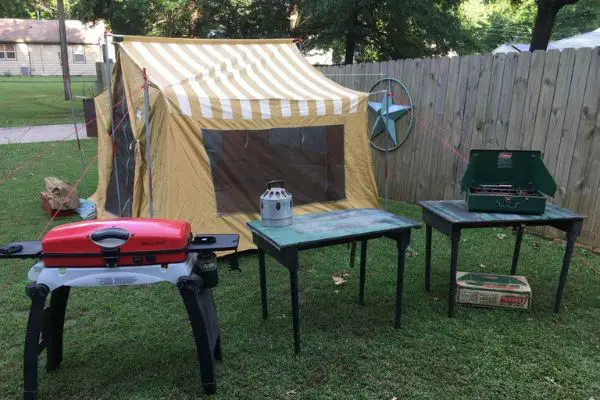
Where you will be camping. If you plan to camp in North America then the most common fuels will be propane, white gas, kerosene, gasoline, wood and electricity. These are all easily sourced fuels and you shouldn’t have any issues keeping an appliance designed to use any of these fuels running.
If you plan to camp outside North America you may need to choose a cooking appliance specifically designed to run on the fuels available in that region. Many camp stoves are dual or multifuel. For example, there are camp stoves which can run on either white gas or kerosene. Others can do white gas or gasoline. Choosing a dual fuel stove that covers North American fuels and the fuels you’ll encounter on your foreign trips is a great way to minimize gear cost.
Geographic Or Environmental Factors Affecting Fuel Choice
If you plan to camp in remote areas, or areas with special climate factors like extreme cold, high altitudes or excessive moisture then you’ll want to choose your fuels accordingly. These areas are usually best served by energy dense liquid fuels which can be stored and carried according to your needs. White gas is typically the best option in these scenarios.
What your existing gear requires. Most camping stoves have specific fuel requirements and in many cases you’re somewhat stuck with that. For example, most RVs have propane stoves, changing that would be costly and likely yield little to no benefit unless you have very unusual specific needs.
There is gear out there, particularly in the tent camping/backpacking world that will run on multiple fuel types. In that case, you’ll need to weigh factors like fuel availability, cost and how clean it burns to determine the best fuel for your stove.
Liquid VS Canister Fuels VS Solid
Which Camping Fuel Makes The Most Sense For RVs?
For RV use, liquid and solid fuels are the two most common choices. On the liquid side, liquid propane is by far the most common with wood (wood, wood pellets, charcoal) being popular solid fuels. The advantages of liquid propane are many.
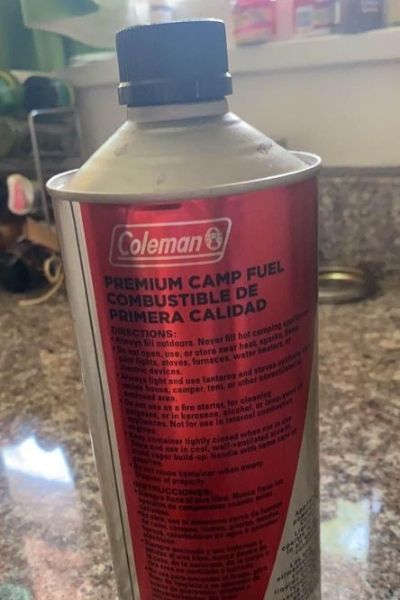
It’s cheap, readily available, and nearly all RVs are set up to use it not only for cooking but for climate control and hot water. Wood is also easy to obtain in most RV camping areas and processed wood products like charcoal and wood pellets are easily found at most supply stores.
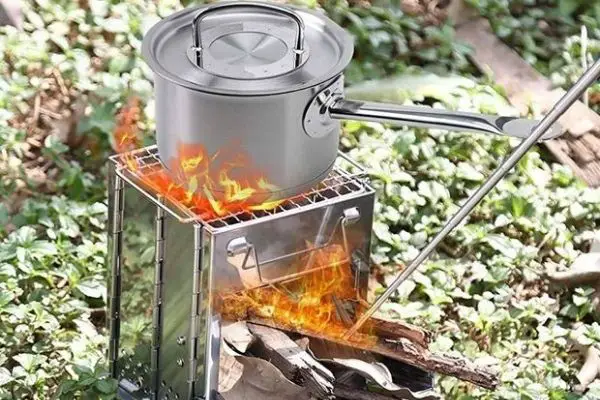
The use of canister fuels is generally limited to specific camp stoves that require them. The high cost, extra storage space required, and redundancy to the onboard propane systems on RVs generally make canister fueled stoves less popular among RVers.
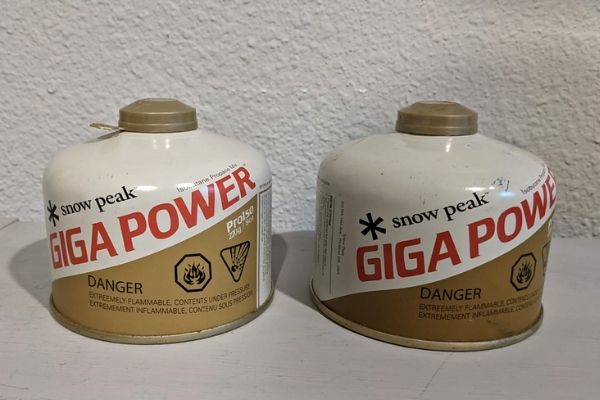
Which Camping Fuel Produces The Most Heat? (Efficient)
Propane is the hottest burning fuel used in camping stoves, with a maximum temperature of 3596 ˚ F (1980 ˚ C). Butane and butane mix fuels are a close second at around 3578 ˚ F (1970 ˚ C). Other common liquid fuels like white gas, gasoline, and Kerosene burn at temperatures about 50% lower or around 1800 ˚ F (982 ˚ C).
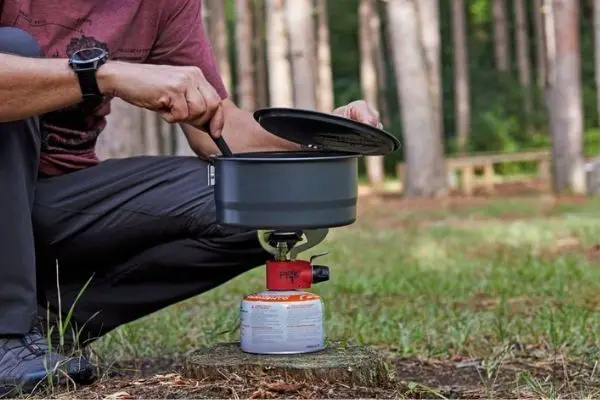
Solid fuels like wood fall down to around 900˚ F (482 ˚ C). Wood pellet stoves can include control fans which can feed additional oxygen to the fire, causing them to burn hotter than traditional firewood.
Which Camping Fuel Works The Best In Cold Weather?
The best camping stove fuel for cold weather applications is white gas. White gas is a purer form of gasoline that lacks the additives found in regular automotive gasoline. Those additives are added to slow the combustion of the gas, giving it a higher octane rating.
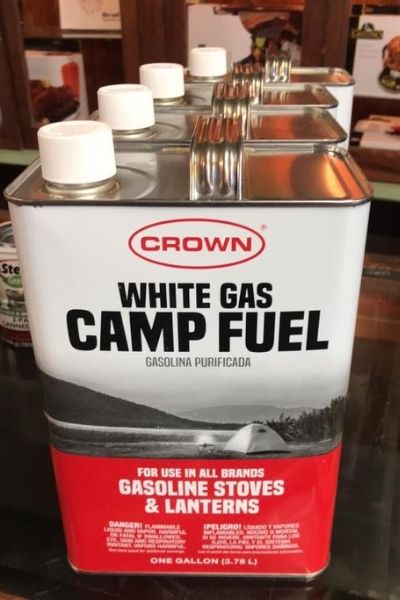
Road gasoline is typically 87 – 93 octane whereas white gas is in the 50 – 55 octane range. The lower octane rating indicates the fuel burns easier and cleaner.
Which Camping Fuel Stores The Best In Cold Weather?
Fuels like white gas, which are liquid at atmospheric pressure, store and perform best in cold weather. If you need to use a canister fuel, the best option is an isobutane mixture. These are usually made up of a mix of propane and isobutane.
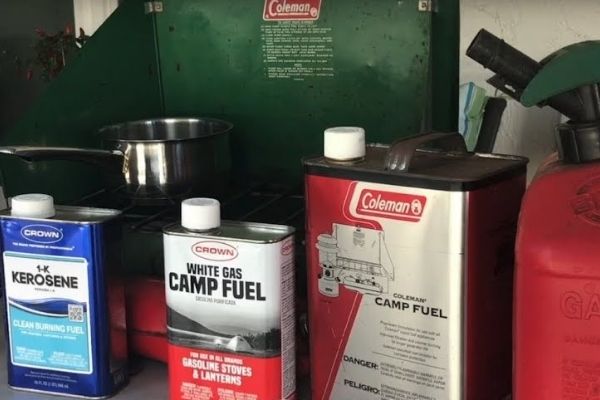
Any fuel that must be in a container to remain liquid at atmospheric pressure (propane, butane, isobutane) will suffer cold weather performance issues. The process of these fuels going from liquid to gas phases for combustion is endothermic so they absorb heat in the phase transition.
If there is less heat to absorb from the surrounding air, the transition becomes less efficient. When the vaporization process slows, vapor pressure and flow rates slow too resulting in decreased performance in your stove.
Which Camping Fuel Is The Safest In A Range Of Weather Conditions?
Safety can be a major concern when camping. The safest camping fuel is wood. It is relatively difficult to ignite and it is relatively poor at sustained combustion. In wet or extremely cold conditions it can become nearly impossible to get burning.
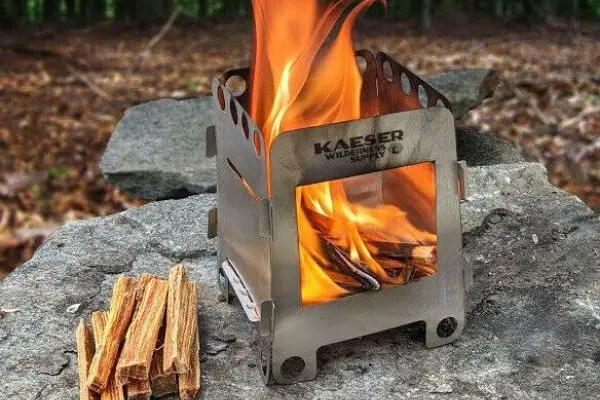
It is also very stable regardless of the surrounding weather. A block of wood won’t change much from the top of Mount Everest to the basin of Death Valley. Wood is wood.
Which Camping Fuel Stores The Longest?
White gas is a highly purified product with no man-made additives that can degrade over time. This makes white gas the fuel storage champion. Butane and propane are also very pure and can be stored for long periods.
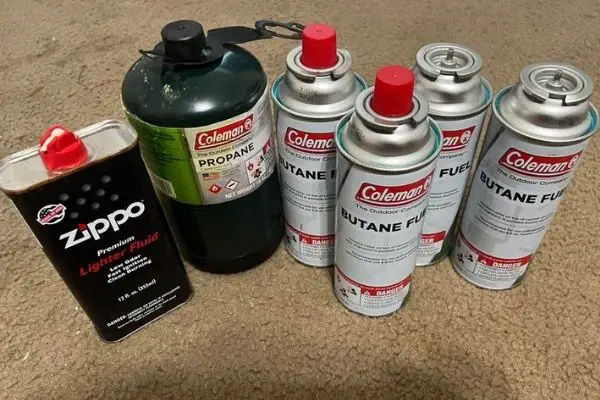
Which Camping Stove Fuel Is The Easiest To Find?
Which fuel is easiest to find will depend entirely on your location? White gas is easy to find in the US, but not so much in other remote parts of the world. In many of those regions, Kerosene will be more prevalent. Electricity is easy to find in most developed areas, but not so much when you are out boondocking.
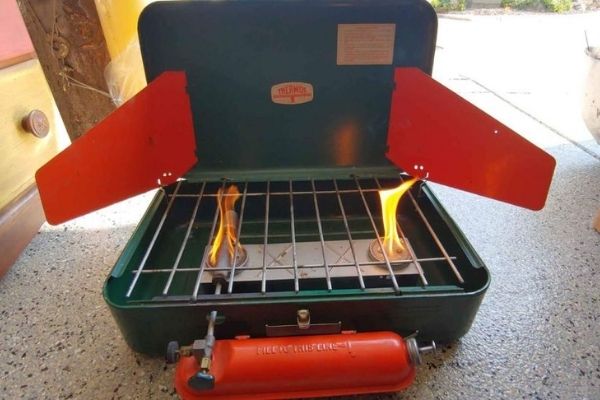
Propane is easy to find in the US, but it can be a rare thing in many parts of the world. The best thing to do is to research the areas you plan to visit and see what the common fuels are in those areas. Once you know that you can choose the appropriate gear to take with you and get yourself prepared accordingly.
Which Fuel Is The Easiest To Use?
Which fuel is easiest to use will depend largely on your situation. Propane is very easy to use provided your equipment supports it and you have access to it. It does require a lot of special equipment like propane tanks, regulators, high and low-pressure plumbing, etc which can make its use prohibitively difficult.
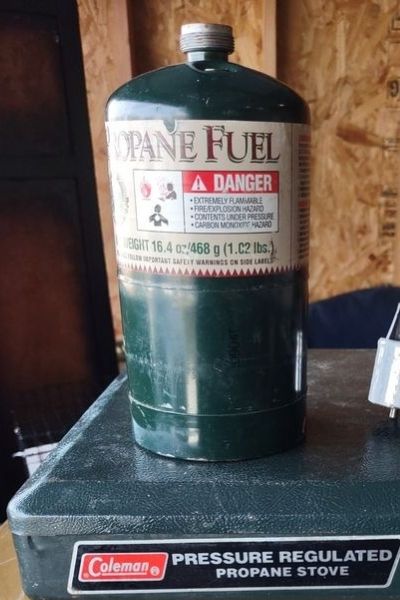
White gas, gasoline, or kerosene don’t require any special tanks or plumbing, but they are more difficult to get to vaporize for proper combustion. This is normally achieved by a generator tube in the stove that uses the heat of the fire to promote fuel vaporization. Once the stove is up and running this is an automatic process, but getting the stove running in the first place can be challenging especially in poor climate conditions.
All things considered, electricity is probably the easiest. You simply plug it in and turn it on. That simplicity comes at a cost. If there is no electricity, there is no easy way to make it work.
Which Camping Fuel Is The Most Economical?
Generally speaking, the most economical fuels will be those that produce the most heat for the lowest cost. Which specific fuel is most economical will depend on a number of factors and may not be easy to determine. One key factor is location.
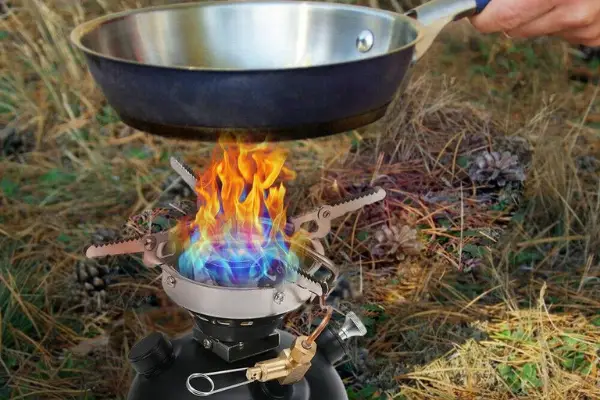
Electric rates, availability of specific fuels, and local taxes can have a large bearing on the cost of any specific fuel in a local market. Traveling across the US, gasoline may be 3 – 5 times more expensive on the coasts than in the heart of the Great Planes.
Local municipalities can have electric supplier contracts that rely heavily on “renewable sources” which significantly raise electric rates. Local fuel taxes can do the same for propane, gasoline, or other fuels. White gas may be hard to come by in some areas, making it more expensive than kerosene, if you can even find it at all.
Which Camping Fuel Is The Most Environmentally Friendly?
The environmental impact of a given fuel can be measured in a lot of different ways so it’s difficult to nail down one fuel as being better than all the others. White gas is very purified so it will burn cleanly. It’s also very energy-dense so you burn less to heat a given item to a specific temperature.
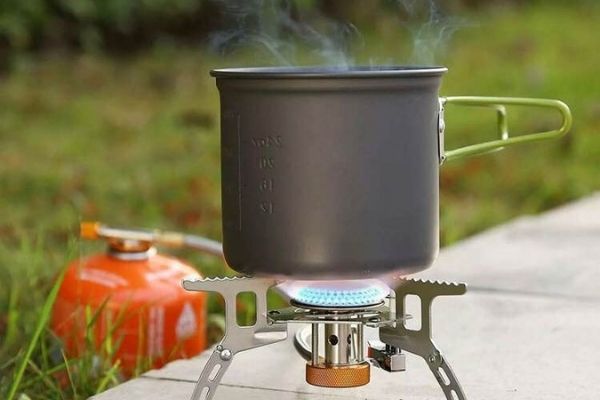
However, it is a petroleum product so it makes some compounds during combustion that are considered unfriendly to the environment. It also releases CO2 back into the atmosphere which was trapped within the earth, making its use “carbon positive”, which some consider environmentally unfriendly. The same is true for most liquid fuels like propane or butane.
On its surface, electric or electric induction would appear to be the cleanest option for many. It uses electricity that is made in bulk from a variety of sources. Even if the power you are using comes from a coal-fired plant, the amount of coal used to power your induction stove is minuscule.
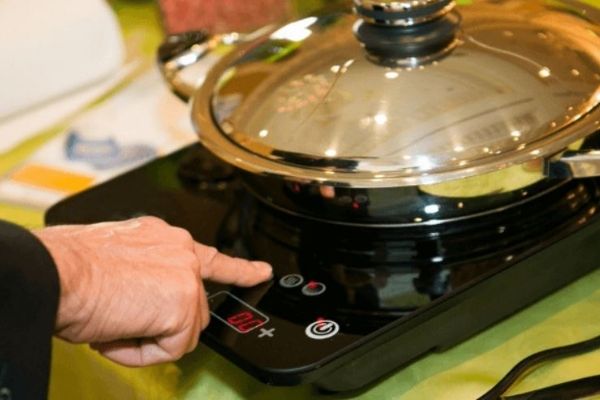
Electric is the only fuel that can be completely clean on the production side since you can power it directly from solar or wind with no direct emissions at all. Of course, your solar panels were produced at a toxin belching factory from raw materials strip-mined from the earth using fossil-fueled powered equipment. So in reality, even a solar-powered electric stove is not entirely environmentally friendly.
Wood is not as clean-burning as the liquid fuel alternatives, so it contributes more particulates into the atmosphere. On the plus side, the CO2 emitted from burning wood was recently taken from the atmosphere and would likely go back due to the normal decomposition process of the wood.
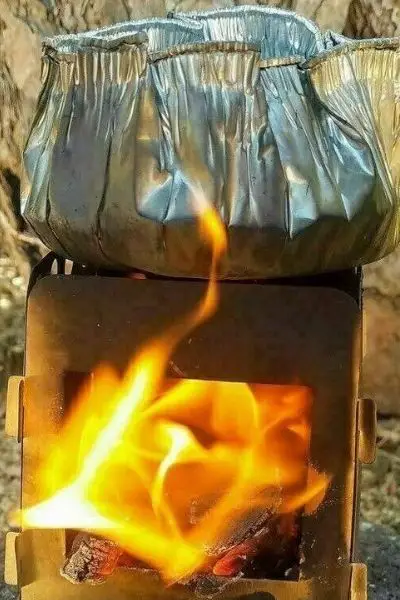
That makes burning wood carbon neutral from a greenhouse gas perspective. Also, burning wood obtained from natural tree falls can keep the forest floor cleaner and less susceptible to forest fires. One could easily argue that burning wood has the least negative environmental impact and could even be a net positive.

